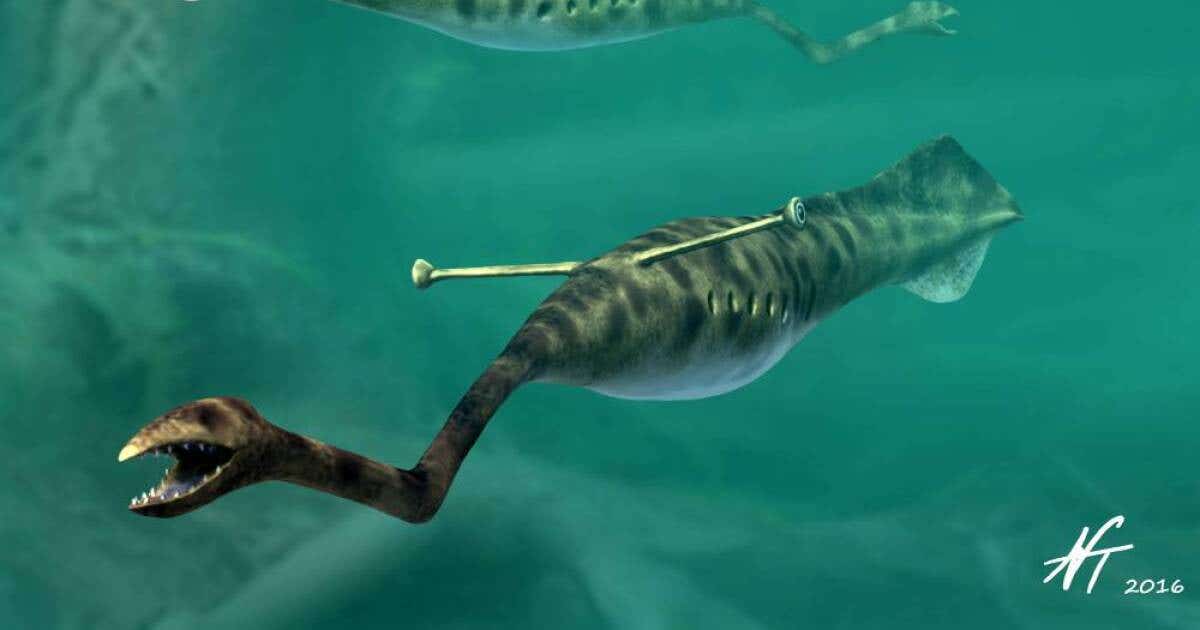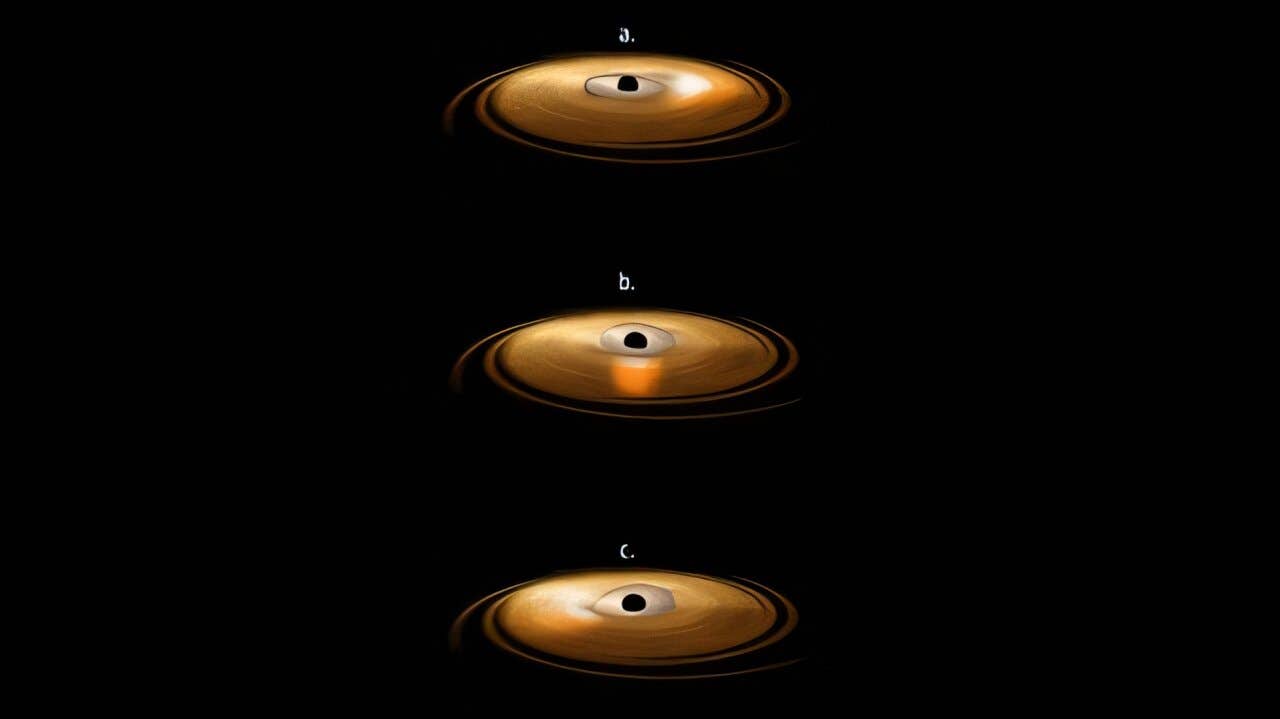Scientists finally discover the secrets of the Tully Monster
Millions of years ago, the world’s oceans teemed with a marine animal reminiscent of a leech, slug, and cuttlefish crossbreed.

[Oct. 6, 2023: Staff Writer, The Brighter Side of News]
A marine animal named the "Tully monster" in honor of its discoverer, has provoked enduring scientific curiosity and controversy. (CREDIT: Nobu Tamura)
Millions of years ago, the world's oceans teemed with an unusual and mysterious creature, a marine animal reminiscent of a leech, slug, and cuttlefish crossbreed. After enduring the vast abyss of time, the fossilized remnants of this creature were unearthed, giving us a glimpse into the rich tapestry of our planet's evolutionary history.
The fossil, named the "Tully monster" in honor of its discoverer, has provoked enduring scientific curiosity and controversy due to its peculiar features and elusive classification.
The 'Tully monster', or Tullimonstrum, burst onto the scientific scene in 1958, thanks to the inquisitive mind and diligent hand of fossil collector, Francis Tully. Tully made the exceptional discovery in the Mazon Creek fossil beds located in the US state of Illinois. This 307 million-year-old fossil, representative of the bygone Pennsylvanian era, added a new layer to the puzzle of paleontology due to its unclassifiable and cryptic nature.
The Tully monster's body plan shows a striking resemblance to that of a slug, albeit with several intriguing additions. Midway along its soft, elongated body, two eye stalks protrude, evoking images of a slug's eye architecture. However, where one would expect to find a mouth, instead lies a long, sinuous appendage, tipped with a claw-like structure that appears to host a set of teeth.
Related Stories
The unconventional and seemingly hybrid features of the Tully monster have thrown into disarray traditional classification models, leading to contentious debates among scientists. At the crux of this issue lies the creature's indeterminate placement within the grand biological dichotomy of vertebrates and invertebrates.
A vertebrate animal possesses a backbone and includes groups such as mammals, birds, fish, and reptiles. In stark contrast, invertebrates lack a backbone and encompass a diverse array of species including insects, octopuses, and crustaceans.
In 2016, a breakthrough study proposed a potential resolution to this scientific conundrum. The researchers meticulously examined the creature's physical traits and concluded that the Tully monster should be classified as a vertebrate.
Discovered in the 1950s and first described in a paper in 1966, the Tully monster, with its stalked eyes and long proboscis, is difficult to compare to all other known animal groups. Unique to Illinois in the U.S., it became its state fossil in 1989. (CREDIT: Takahiro Sakono, 2022)
Central to their argument was the identification of a notochord, a flexible, rod-shaped structure running through the length of the Tully monster's body. Although the notochord does not qualify as a true backbone, it acts as a precursor to the spinal cord, indicating an evolutionary link with vertebrate organisms. The team drew parallels with modern-day lampreys, which also possess a notochord, lending further credence to the Tully monster's vertebrate classification.
Alongside the notochord, the researchers delved into the enigma of the creature's eyes. They examined pigment granules, or melanosomes, that resided within the Tully monster's eyes. The size and shape of these melanosomes shared uncanny similarities with those found in other vertebrates, providing compelling evidence supporting the creature's designation as a vertebrate.
Often used to study dinosaur footprints, these color-coded depth maps enabled the researchers to thoroughly investigate the structure of the Tully monster and other fossils from Mazon Creek. (CREDIT: Mikami, 2022)
The 2016 study was initially hailed as the defining resolution to the mystery of the Tully monster's classification. However, the serenity was short-lived as a more recent study contested the 2016 findings, reigniting the fiery debate within the scientific community.
In this latest study, the team deployed cutting-edge synchrotron radiation light source technology to inspect the melanosomes in the creature's eyes. They performed a detailed chemical analysis by exposing Tully monster fossil samples, alongside samples from contemporary vertebrates and invertebrates, to intense radiation bursts from a particle accelerator. This process allows the researchers to identify unique X-ray signatures corresponding to different chemical elements present within each sample.
Morphology and phylogeny of Tullimonstrum. (CREDIT: Nature)
The fresh insights from the most recent study have shaken the earlier vertebrate classification of the Tully monster, casting a cloud of uncertainty over its true biological identity. However, the study fell short of unequivocally classifying the Tully monster as an invertebrate, leaving its categorization as tantalizingly unresolved as ever.
In the wake of these conflicting findings, the scientific community is once again back at the drawing board, tasked with deciphering the Tully monster's place in the Earth's biological history. The enigma of the Tully monster remains shrouded in mystery, underscoring the intricate and often elusive nature of evolutionary biology. As we continue to grapple with this prehistoric puzzle, one thing is clear: the story of the Tully monster is far from over.
For more science stories check out our New Discoveries section at The Brighter Side of News.
Note: Materials provided above by The Brighter Side of News. Content may be edited for style and length.
Like these kind of feel good stories? Get the Brighter Side of News' newsletter.



